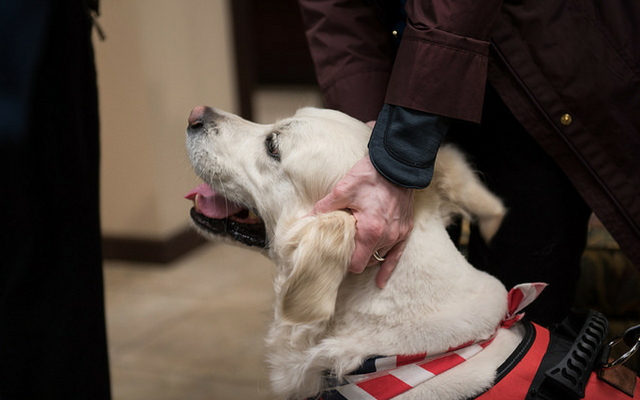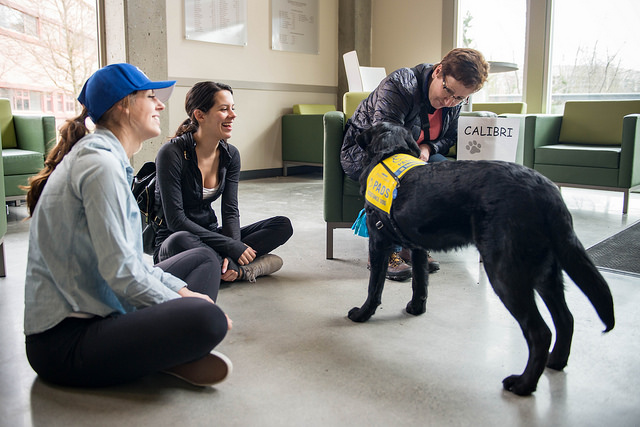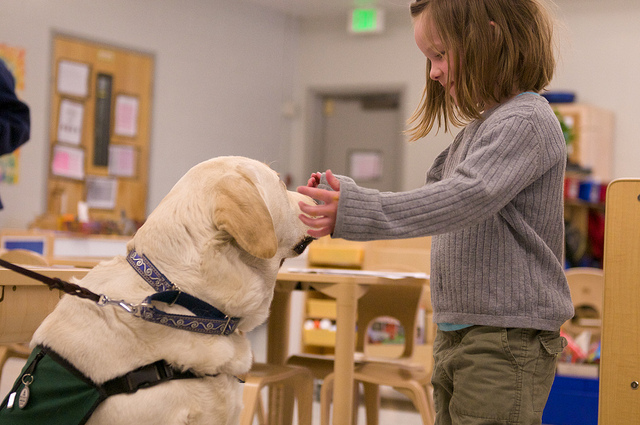With a growing list of places where you might run into a therapy dog, it’s easy to see real-life examples of the good work they’re known for. They visit hospitals, nursing homes, schools, and even airports to bring their special breed of emotional support to two-leggers of all ages. Science has already proven therapy dogs make real differences when it comes to emotional well-being. We know the people are happy, but what about the dogs?
Most people know what it feels like to have a job they don’t like. Not enjoying the one thing you spend most of your time doing can play a serious emotional toll, and that’s as true for dogs as it is people. The good news is, a study published in Applied Animal Behavior has found therapy dogs are part of the lucky population of working professionals that actually enjoy what they do.

The study followed 26 therapy dogs as they worked at five different locations. Researchers met with over 100 human patients while observing the dogs on the job, and the study is the largest of its kind. They couldn’t interview the dogs and ask what they thought of their line of work, so they needed a different strategy to determine what the dogs were thinking. They did this by measuring cortisol levels in the dogs’ saliva. Cortisol is a specific hormone related to stress. The higher the cortisol level, the more stress the dog is feeling.
Not all stress is bad, however. There’s also positive stress that comes from excitement or anticipation. To be sure the researchers weren’t confusing good stress with bad stress, they also planned to analyze the dogs’ body language. They characterized behaviors into “friendly actions,” like voluntarily initiating contact with a person, “moderate stress indicators,” like lip-licking, and “high-stress indicators,” like whining.

To start, the team measured cortisol levels while the dogs were relaxing at home. They used this as a baseline. When the dogs went to work and performed their many therapy dog duties, researchers collected more saliva samples and videotaped the sessions. When the results were in, scientists found there was no difference between the cortisol levels when the dogs were at home versus when they were on the job. This suggests they felt the same levels of stress and comfort while relaxing as they did at work. If only we were all that lucky.
The dogs’ body language also suggested the furry professionals were at ease on the job. They did find, however, that most of the dogs seemed to be happier doing specific activities with their patients than when doing others. They loved interacting through play and receiving affection, but they seemed to merely tolerate being groomed and sitting patiently while their portraits were drawn.

National director of research and therapy at American Humane and the study’s leader, Amy McCullough, told National Geographic,
“It needs to be a mutually beneficial interaction when they are visiting with the client, so it’s important that the dog really loves their job.”
There are countless dogs out there that are friendly and willing to lend a helping paw to a person in need, but that doesn’t mean they’re all up for the challenge of being a certified therapy dog. The best patient/four-legged therapist interactions are the ones where both sides of the equation are gaining something. The dog needs to genuinely enjoy what they’re doing in order to provide the best benefit for the person they’re helping.
h/t: National Geographic
Featured image via Flickr/Chairman of the Joint Chief of Staff
